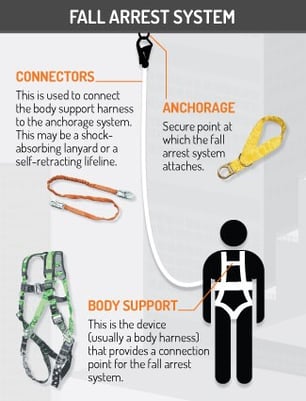OSHA Updates 30-Year-Old Safety & Health Plan Guidelines

OSHA announced its new safety and health plan recommendation, updated for the first time in three decades. During the 2016 NSC Congress & Expo, OSHA Assistant Secretary of Labor David Michaels announced changes to its Safety and Health Program Management Guidelines to safety professionals attending the show. "We really need to take safety into the 21st century. We think this is a big step forward."
OSHA's recommended safety plan is intended to aid employers, especially small- and medium-sized organizations, as they build a systematic approach to improving safety and health in their workplaces. "Every employer, no matter the size, no matter the industry, should have a safety and health program," Michaels said.
"We really need to take safety into the 21st century," Michaels said during his presentation at the tradeshow. "We think this is a big step forward."
The updated OSHA guidelines come as a response to changes in the American workforce evolving over the past 30 years. Factors changing the face of the modern workforce include less reliance on manufacturing, enhanced technology systems, more diversity among workers, and a larger portion of sedentary work, leading to more musculoskeletal disorders. Also adding to changes are new hazards in healthcare, retail and other industries once thought of as being low-risk.
Five Ways to Jump-start a Safety and Health Program
 OSHA lists a number of ways to move a safety discussion to a full-fledged plan at your workplace. For more, visit the OSHA safety and health plan website. Some tips OSHA offers:
OSHA lists a number of ways to move a safety discussion to a full-fledged plan at your workplace. For more, visit the OSHA safety and health plan website. Some tips OSHA offers:
- Always set safety and health as the top priority. Tell your workers that making sure they finish the day and go home safely is the way you do business. Assure them that you will work with them to find and fix any hazards that could injure them or make them sick.
- Lead by example. Practice safe behaviors yourself and make safety part of your daily conversations with workers.
- Implement a reporting system. Develop and communicate a simple procedure for workers to report any injuries, illnesses, incidents (including near misses/close calls), hazards, or safety and health concerns, without fear of retaliation. Include an option for reporting hazards or concerns anonymously.
- Collect hazard control ideas. Ask workers for ideas on improvements and follow up on their suggestions. Provide them time during work hours, if necessary, to research solutions.
- Implement hazard controls. Assign workers the task of choosing, implementing, and evaluating the solutions they come up with.
Special Considerations for Construction
The construction industry will have its own recommended practices for safety and health programs, due to be published in the near future, according to OSHA. In line with this, Duralabel offers specialized resources addressing the unique challenges the industry faces in regard to safety, including the #1 OSHA violation for many years running: fall protection. DuraLabel offers articles on fall protection standards, infographics such as fall clearance calculations, guides on topics such as crane safety, and fall arrest products.
Related Resources

Could a Construction Labor Shortage Mean Cutting Corners on Safety?
Construction labor and subcontractor shortages are a reality in June 2016 as housing starts increase. Will ...
Read
Creating a Safety Culture That Sticks
71% believe their employers are not following through on safety promises 64% report no active efforts to ...
Read
Guidelines for OSHA Fall Protection Standards and Compliance
Ineffective or missing fall protection has been the Occupational Safety and Health Administration's (OSHA) ...
Read.png)





